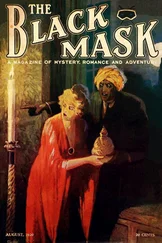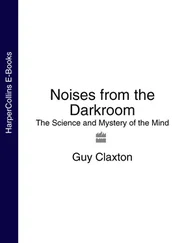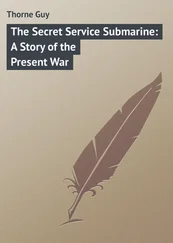Over dinner, Lynda described an idea she had conceived for a science-fiction movie and asked me to help her flesh it out. This would be her second venture into science fiction: a collaboration with me, modeled on her previous collaboration with Carl Sagan on the movie Contact .
I never imagined myself helping create a movie. I never coveted a presence in Hollywood, beyond a vicarious one, through Lynda’s adventures. But working with Lynda appealed to me, and her ideas involved wormholes, an astrophysics concept I had pioneered. So she easily lured me into brainstorming with her.
During the next four months, over a few dinners and e-mails and phone calls, we formulated a rough vision for the film. It included wormholes, black holes, and gravitational waves, a universe with five dimensions, and human encounters with higher-dimensional creatures.
But most important to me was our vision for a blockbuster movie grounded from the outset in real science . Science at and just beyond the frontiers of human knowledge. A film in which the director, screenwriters, and producers respect the science, take inspiration from it, and weave it into the movie’s fabric, thoroughly and compellingly. A film that gives the audience a taste of the wondrous things that the laws of physics can and might create in our universe, and the great things humans can achieve by mastering the physical laws. A film that inspires many in the audience to go learn about the science, and perhaps even pursue careers in science.
Nine years later, Interstellar is achieving all we envisioned. But the path from there to here has been a bit like the “Perils of Pauline,” with many a spot where our dream could have collapsed. We acquired and then lost the legendary director Steven Spielberg. We acquired a superb young screenwriter, Jonathan Nolan, and then lost him twice, at crucial stages, for many months each. The movie sat in limbo, directorless, for two and a half years. Then, wondrously, it was resurrected and transformed in the hands of Jonathan’s brother, Christopher Nolan, the greatest director of his young generation.
Steven Spielberg, the Initial Director
In February 2006, four months after we began brainstorming, Lynda had lunch with Todd Feldman, Spielberg’s agent at the Creative Artists Agency, CAA. When Feldman asked what movies she was working on, she described her collaboration with me, and our vision for a sci-fi movie with real science woven in from the outset—our dream for Interstellar . Feldman got excited. He thought Spielberg might be interested and urged Lynda to send him a treatment that very day! (A “treatment” is a description of the story and characters, usually twenty pages or longer.)
All we had in writing were a few e-mail exchanges and notes from a few dinner conversations. So we worked at whirlwind speed for a couple of days to craft an eight-paged treatment we were proud of, and sent it off. A few days later Lynda e-mailed me: “Spielberg has read it and is very interested. We may need to have a little meeting with him. Game? XX Lynda.”
Of course I was game! But a week later, before any meeting could be arranged, Lynda phoned: “Spielberg is signing on to direct our Interstellar! ” Lynda was ecstatic. I was ecstatic. “This kind of thing never happens in Hollywood,” she told me. “Never.” But it did.
I then confessed to Lynda that I had seen only one Spielberg movie in my life— ET , of course. (As an adult, I had never been all that interested in movies.) So she gave me a homework assignment: Spielberg Movies Kip Must Watch .
A month later, on March 27, 2006, we had our first meeting with Spielberg—or Steven, as I began to call him. We met in a homey conference room in the heart of his movie production company Amblin, in Burbank.
At our meeting, I suggested to Steven and Lynda two guidelines for the science of Interstellar :
1. Nothing in the film will violate firmly established laws of physics, or our firmly established knowledge of the universe.
2. Speculations (often wild) about ill-understood physical laws and the universe will spring from real science, from ideas that at least some “respectable” scientists regard as possible.
Steven seemed to buy in, and then accepted Lynda’s proposal to convene a group of scientists to brainstorm with us, an Interstellar Science Workshop.
The workshop was on June 2 at the California Institute of Technology (Caltech), in a conference room down the hall from my office.
It was an eight-hour, free-wheeling, intoxicating discussion among fourteen scientists (astrobiologists, planetary scientists, theoretical physicists, cosmologists, psychologists, and a space-policy expert) plus Lynda, Steven, and Steven’s father Arnold, and me. We emerged, exhausted but exhilarated with a plethora of new ideas and objections to our old ideas. Stimuli for Lynda and me, as we revised and expanded our treatment.
It took us six months due to our other commitments, but by January 2007 our treatment had grown to thirty-seven pages, plus sixteen pages about the science of Interstellar .
Jonathan Nolan, the Screenwriter
In parallel, Lynda and Steven were interviewing potential screenwriters. It was a long process that ultimately converged on Jonathan Nolan, a thirty-one-year-old who had coauthored (with his brother Christopher) just two screenplays, The Prestige and The Dark Knight, both big hits.
Jonathan, or Jonah as his friends call him, had little knowledge of science, but he was brilliant and curious and eager to learn. He spent many months devouring books about all the science relevant to Interstellar and asking probing questions. And he brought to our film big new ideas that Steven, Lynda, and I embraced.
Jonah was wonderful to work with. He and I brainstormed together many times about the science of Interstellar , usually over a two- or three-hour lunch at the Caltech faculty club, the Athenaeum. Jonah would come to lunch brimming with new ideas and questions. I would react on the spot: this is scientifically possible, that isn’t,… My reactions were sometimes wrong. Jonah would press me: Why? What about…? But I’m slow. I would go home and sleep on it. In the middle of the night, with my gut reactions suppressed, I would often find some way to make what he wanted to work, work. Or find an alternative that achieved the end he sought. I got good at creative thinking when half asleep.
The next morning, I would assemble the semicoherent notes I had written during the night, decipher them, and write Jonah an e-mail. He would respond by phone or e-mail or another lunch, and we would converge. In this way we came to gravitational anomalies, for example, and the challenge of harnessing them to lift humanity off Earth. And I discovered ways, just beyond the bounds of current knowledge, to make the anomalies scientifically possible.
At crucial times we brought Lynda into the mix. She was great at critiquing our ideas and would send us spinning off in new directions. In parallel with our brainstorming, she was working her magic to keep Paramount Pictures at bay so we could maintain our creative autonomy, and planning the next phases of turning Interstellar into a real movie.
By November 2007, Jonah, Lynda, Steven, and I had agreed on the structure for a radically revised story based on Lynda’s and my original treatment, Jonah’s big ideas, and the many other ideas that arose from our discussions—and Jonah was deep into writing. Then, on November 5, 2007, the Writers Guild of America called a strike. Jonah was forbidden to continue writing, and disappeared.
I panicked. Will all our hard work, all our dreams, be for naught? I asked Lynda. She counseled patience, but was clearly very upset. She vividly tells the story of the strike in scene 6 of her book Sleepless in Hollywood . The scene is titled “The Catastrophe.”
Читать дальше












